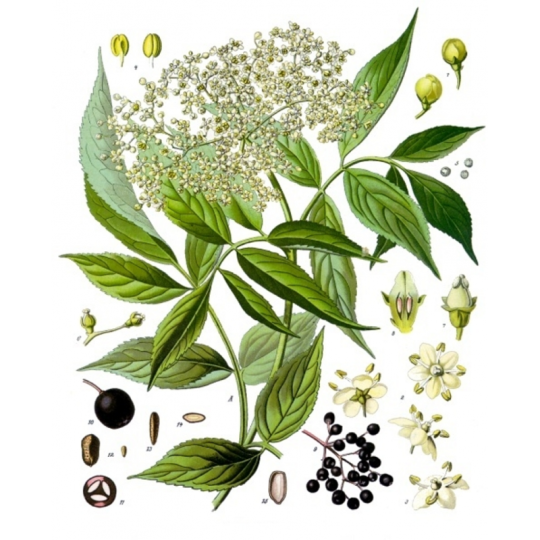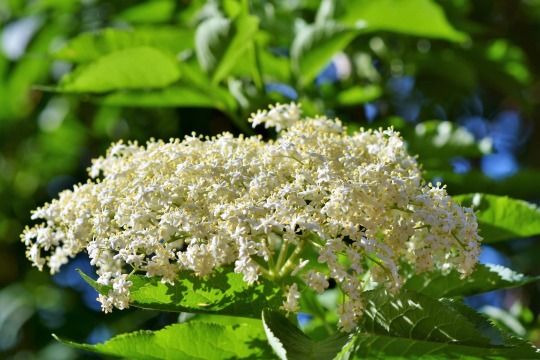#hydrocyanate
Explore tagged Tumblr posts
Note
Are you still doing the numbers asks? If so could I please ask for 44 and 44?
I guess I am!
44. RANDOM FACT:
The largest snail species in the world is the Australian Trumpet Snail, which can grow up to three feet long and weigh up to 40 pounds.
44. RANDOM FACT:
Cyanide does not taste like almonds- almonds taste like cyanide. Bitter almonds contain amygdalin, which metabolizes into hydrocyanic acid inside the body- hydrocyanic acid is a solution of cyanide in water. Consuming under 50 unprocessed bitter almonds can kill a grown adult.
233 notes
·
View notes
Text






Kantia (2) (3) (4) (5) (6) by Koutroufi
Via Flickr:
(1) (4) (5) (6) This is how a Greek beach looks like during winter. This photograph was taken on Kantia beach, 30 minutes from the town of Nafplio. (2) Dimorphotheca ecklonis is an ornamental plant that is native to South Africa. This plant contains hydrocyanic acid, which makes it poisonous if consumed. (3) Cakile Maritima (Sea rocket) is a beautiful seaside annual plant found mostly in Europe, north Africa and western Asia. It is also present in North America on the East and the West coast, where it has the potential to become an invasive species.
#beach#boats#flowers#cape marguerite#star of the veldt#sea rocket#ocean and sky#greece#peloponnese#morea#cats
19 notes
·
View notes
Note
i can’t believe u put junk into ur body like that. so many chemicals can’t be good for u, plus all the cancer causing ingredients? ur def gonna die early. USAmericans are so stupid omg
so let’s play a game!! i’m gonna describe a food item, and you have to guess what i’m talking about. ready?
these can contain up to 20 milligrams of formaldehyde, as well as ungodly amounts of ascorbic acid, sulfur, chlorine, hydrocyanic acid (aka cyanide), and neoxanthin all of which have been associated with cancer in multiple studies. everyone who’s had cancer has eaten at least one of these in their lifetime. it also has an ingredient that has been scientifically proven to accelerate corrosion and cause suffocation in humans.
20 notes
·
View notes
Text
Humans and toxins
(part 3)
Many humans often have allergies as well. This can cause issues with dairy products, nuts, and even pollen. However you don't need to have allergies to be wary of almonds. Though almonds aren't typically cause for concern for the average human they can be deadly. Unprocessed almonds can contain hydrocyanic acid, which is another name for cyanide. I've recently discovered many human foods contain this deadly component. However your human will most likely know the difference between safe and unprocessed almonds.
130 notes
·
View notes
Text

MP 4536, Texarkana, AR
We are looking west at what I thought may be L936 off of the Bonham Sub arriving in track #18 at Texarkana, but surely that "candy striper" hydrocyanic acid car second out did not come off the branch, so this is likely a cut of cars is being pulled out to class by the north end yard job? But the yard job usually works with a single GP38/38-2. Puzzling to say the least. The MRS car in fresh paint looks good, and the yardmaster's tower can be seen on the left. This was a Sunday morning and looks like L930 may be building in #9.
9-30-1984
18 notes
·
View notes
Text

Dental check-up: Some facts about Silva's super fancy prothesis!
Actually, a prothesis like this is called epithesis, as it replaces not only teeth but major parts of the facial bone, in Silva's case maxilla and zygomatic.
In Skyfall, it is said that Silva's teeth and facial bones were eroded by hydrocyanic acid. In fact, hydrocyanic acid is even less corrosive than citric acid. It does not lead to chemical burn of bones or tissue but inhibits cellular respiration which leads to organ failure and, without any medical help, to death.
It's also said that the acid was imbedded in Silva's molar. I wonder if this is medically possible...? I mean, does he have a crown with some kind of space underneath where the toxic capsule is in? How is this crown attached to his natural tooth, assuming the fact that it's hollow? And how is it guaranteed that the capsule is not activated by accident? I'd like to have a talk with Silva's dentist. And there's another point: In a previous take, we see Silva taking out his epithesis.

But, oh my, there are some rotten teeth beneath it! Which dentist on the planet would do that??? These teeth do not look as if they have any use for attaching the epithesis. They do not look like telescopic crowns, OBVIOUSLY. They are extremely decayed and might be a chronical focus of inflammation, which means a lot of avoidable stress for poor Silva's immune system. I don't have to mention that they should be removed as soon as possible.
#okay call me a dental nerd or whatever#who is your dentist silva?#he's gonna loose his licence#skyfall#skyfall meta#raoul silva#dentistry#james bond#villains
52 notes
·
View notes
Text










Perfect blue Spring
The hydrocyanic shadows of memories of an early spring that has sunk into eternity, hidden behind the dusty tulle of years and covered with a warm evening blueness.
Natalie Ina
Model - Daria Skupova.
Natalie Ina Photography.
March 2020.
Instagram
Behance
#natalie ina photography#darkness#dark photography#dark aesthetic#art photography#dark blue#dark blue color#photography#natalie ina#dark academia#natalieinaphotography#vintage aesthetic#dark room#vintage atmosphere#dark spring#spring forest#early spring#blueness#dark blue colour
50 notes
·
View notes
Note
What uniform would you choose for a gas execution role play?
Excellent question!
Colorado, Missouri, Arizona and California all used the gas chamber at some point. My inclination would be to use one of their uniforms from the period of use.



I would use a pair of button fly, Fisher stripe denim pants, white prison socks, boxers and tee shirt, black or brown prison boots, and either a blue chambray shirt or hickory stripe shirt. My shirt would be tucked in with cuffs and collar buttoned for the walk to the gas chamber. If I had a long, cool season walk (as Colorado inmates did) I would wear my blue denim yard coat.
The uniform would be freshly laundered and lightly pressed with my prison number stenciled visibly.
I would be showered, cleanly shaven, and have a close cropped or shaved head haircut.
On arrival at the gas chamber, I would remove all clothing but boxer shorts and pants before being strapped in to the chair and a stethoscope taped to my chest.




All four men executed by hydrocyanic gas asphyxia.
18 notes
·
View notes
Text
Every time that I have to do chemisty I remember that I almost went to art school. I could be drawing right now. I could be making a pretty little painting. But no. I have to find the pH of a hydrocyanic acid solution. sobbing and crying
2 notes
·
View notes
Text
Constance can put her hand upon a bewildering array of deadly substances without ever leaving home; she could feed you a sauce of poison hemlock, a member of the parsley family which produces immediate paralysis and death when eaten. She might have made a marmalade of the lovely thornapple or the baneberry, she might have tossed the salad with Holcus lanatus, called velvet grass, and rich in hydrocyanic acid. I have notes on all these, madam. Deadly nightshade is a relative of the tomato; would we, any of us, have had the prescience to decline if Constance served it to us, spiced and made into a pickle? Or consider just the mushroom family, rich as that is in tradition and deception. We were all fond of mushrooms—my niece makes a mushroom omelette you must taste to believe, madam—and the common death cup—
— Shirley Jackson, We Have Always Lived In The Castle
#we have always lived in the castle#julian blackwood#constance blackwood#shirley jackson#words#food and appetites#poison
15 notes
·
View notes
Text
Black Elderberry.
[Excerpt arranged by me from the Dictionary of Medicinal and Poisonous Plants of France by P..V Fournier.]

Elderberry, Suseau, Susier, Sus, Seus, Seuillet, Seuillon, Haut-bois, Grand Elder, Tree of Judas.
Sambucus nigra. This name is surely linked to the Greek σαμβύκη, sambukê which among the Greeks designated a flute or a harp, the hollow stems of the elderberry allowing music to be made.*
Generalities : Shrub or small tree from 3 to 10 m, the Elderberry is widespread everywhere in the hedges, the villages, less often in the woods and on the banks of the rivers. It bears numerous opposite branches, leaves and flowers.
They bloom in May-June, giving off a very pronounced particular odor and become yellowish as they dry out. They give birth to spherical berries, first green, then purplish black, shiny, with red juice.
Its flowers are not very nectariferous and therefore of no interest to bees.
-
Toxicity: The leaves and the second bark are toxic due to their hydrocyanic acid content when fresh and in high doses.

History : Already, prehistoric populations collected elderberries and perhaps made a fermented drink from them, as can be concluded from seed heaps found in Stone Age and Bronze Age sites in Switzerland. and in Italy.
This shrub was well known in antiquity. Theophrastus describes him as Aktê. The Hippocratics (4th century BC) attribute laxative, diuretic and gynecological properties to it.
Dioscorides says that the leaves and the young shoots cooked like vegetables chase away bile and pituite*; the root cooked in wine is given to dropsy, acts against the bites of vipers and is an emmenagogue*; it is also used as an ointment against gout.
The same indications are found in the Middle Ages, Saint Hildegarde recommends against jaundice, baths prepared with the leaves.
Saint Albert the Great (12th century) declared the bark, leaves and stems purgative and emetic. He reports a belief, stemming from sympathetic magic, according to which the bark would be laxative when it was detached from the trunk from top to bottom, and emetic if one operated in the opposite direction.

Properties :
The bark, leaves, flowers and fruits are used. All these parts appear unequally sudorific, dieuretic, purgative, emetic, and externally: detergent and resolvent.
The inner bark or second bark (liber) which forms a green base under the gray outer bark (suber), is in the fresh state, the most active part of the Elderberry. Sweetish at first, its flavor then becomes bitter, acrid and nauseous. The root would act even more energetically.
Externally ringworm has been successfully treated with an ointment made from pounded fresh bark and boiled in lard.
In addition, in application or in the form of an ointment, they are used to soothe hemorrhoid pain and heal them.
Leaf powder that is inhaled is also said to stop nosebleeds.
-
Perspiration caused by Elder flowers can abort bronchitis, angina, pneumonia.
The decoction of dry flowers provides excellent compresses on eczema and erysiple, good lotions against conjunctivitis and chronic ophthalmia.
The fresh flowers (very energetic) are used effectively against engorgements, cold tumours, paronychia, gangrenous wounds, ulcers, strong local inflammations and burns.
The fruits are very good for acute rheumatic fever because they also have calming properties in addition to diuretics.

Manual :
Diuretic decoction: 2 handfuls of second bark in a liter of water. Reduce by half by boiling.
Sudorific infusion of dry flowers: 10 to 50g per liter of boiling water. To be taken by hot cups close together.
Diuretic wine: 150g of second peel in 1 liter of white wine infused for 36 hours.
Powder of dry leaves: 10 to 15g in honey.
Surard vinegar: 10g of dry flowers macerated for a fortnight in 1 liter of wine vinegar. 4 to 10g in a cup of hot sugary water (very good for colds, high fevers and rheumatism.) This preparation can be used as toilet vinegar (?!)
Sudorific infusions composed of: Elder flowers and Linden flowers and the flowering tops of Sage (dosage in "one for one".)
-
For external use:
In infusion and decoctions 100g of flowers per liter of water.
Hot sachets of Elderberry (sometimes with Chamomile) applied locally against pain in the ears, teeth, stomach and joints.
Use against insect and viper bites: in friction and in decoction of leaves.
-
*wikipedia
*Pituite (from the Latin pituita), also called phlegm or phlegm, is an old medical term, which has hardly been used since the middle of the 20th century, and which could be related to phlegm or mucus produced by mucous membranes.
*Medicinal plants that stimulate blood flow in the pelvic region and uterus are called emmenagogues.
9 notes
·
View notes
Note
Tucupi is rich in hydrocyanic acid, which can be deadly for those who are not used to drinking it o3o
Aaaaaaaaaannnnd there it is
2 notes
·
View notes
Text
Name: The Mask First Appearance: Wonder Woman #24 (1947) Creators: William Marston and H.G Peter Abilities: Gun haver. Possesses pistol which fires spider threads which can entrap people. Ace pilot. Possession of the invisible plane. Keeps on hand a large number of acid trapped masks which will kill the wearer if they remove them incorrectly. Commands vast wealth and an army of hired henchmen.
Backstory: Wife to phony adventurer Brutus Close who was obsessed with his own image, Nina Close suffered constant abuse at her husbands hands while he busily went out of his way trying to promote himself as a great explorer and big game hunter.
In reality, Brutus would hire the services of actual explorer and ace pilot Fancy Framer, and then use his millions to promote those feats as his own doing. All the whole subjecting his wife to abuse of the verbal, physical, and emotional variety. Spending millions to make the world love him while rarely providing even basic necessities for his wife who he forbid to ever leave her home.
This eventually driving Nina to snap, she would don the identity of ‘The Mask’ using a mastery of aviation and trick ‘masks’ to force people to do her bidding least they die a horrible death ingesting hydrocyanic acid.
Framing Fancy Framer whose skills matched those of the Mask, Nina Close would steal the Invisible Plane and go on a campaign to destroy the empire her husband built and make him suffer as she had suffered for all those years.
In post crisis continuity, the Mask still suffered terrible abuse at the hands of her horrible husband. However she would eventually turn the tables and kill him, using his fortune to fight back against abusers and those who would empower them. Willing to commit to commit any crime if it meant closure for their victims.
In the post-post crisis continuity, The Mask was born with the name Nina Solorzano and changed her name to Natalia Close following her career as a social media star and her marriage to billionaire CEO Brutus Close, leading to them having a son by the named of Theodore.
In reality however, Nina lived a false life. Raised by her mother who pushed for her to bleach her skin to look white, dye her hair blond and pushed for her to become involved in social media, to live a life of fame to ‘have the life she never could.’
Forced to drop out of school to focus on her social media career, Nina was coached to always be all smiles and play the part of a bubbly pretty face regardless of how she felt or how others treated her. Treated like a product by her mother and then a walking talking commercial to promote the business by her husband, who wished to bring attention to false claims of the company going green and helping the world when in reality their pesticides were strong enough to melt paint and would poison any crops they were used upon.
Eventually snapping after a life of being a door mat and feeling like little more than an empty image to be passed around for pay checks by those who pretended to care about her, Nina would cast aside her old identity to take up the moniker of ‘The Mask’ Donning a mask as she sought revenge on a world which made her into little more than a false mask herself.













0 notes
Text
Market Insights: Sodium Cyanide Demand and Supply Dynamics

The Deadly Poison: Understanding Sodium Cyanide History and Discovery Sodium cyanide was discovered in the 18th century and has since been utilized for various industrial purposes. First produced in Germany in 1782, it has found widespread commercial application as a reagent in gold and silver mining. This cyanide works by solubilizing precious metals, allowing them to be separated from ore. It has been one of the primary methods for extracting gold from mineral deposits since the late 1800s. Beyond mining, it is also used to manufacture items like dyes, plastics and pharmaceuticals. However, it is also highly poisonous to humans and other living organisms. It was first used as a pesticide in the late 19th century and briefly served as a chemical weapon during World War I before being banned internationally. Due to its ability to quickly kill via inhibition of cellular respiration, cyanide compounds have also been employed for capital punishment in some countries. Overall, sodium cyanide's discovery unlocked economic opportunities but also introduced grave human safety concerns that remain relevant today. Chemical and Physical Properties On a molecular level, it is composed of one sodium atom bound to one cyanide ion. The chemical formula is NaCN. It appears as a white, crystalline solid at room temperature with a faint, bitter almond-like odor. This cyanide is highly soluble in water. It burns or explodes when heated to decomposition, releasing toxic fumes of hydrogen cyanide, carbon monoxide and nitrogen oxides. These physical attributes have contributed to sodium cyanide's use for dangerous purposes as well as the challenges in transporting, storing and disposing of it safely. A key property is that sodium cyanide readily dissociates in water to yield hydrocyanic acid (hydrogen cyanide, HCN), a volatile liquid that can be inhaled or absorbed through the skin. Hydrogen cyanide interferes with cellular respiration by inhibiting an enzyme called cytochrome c oxidase. This ultimately stops oxygen from being used to generate energy-carrying molecules within cells, causing rapid asphyxiation at the cellular level. For these reasons, even small amounts of ingested or inhaled cyanide can prove fatal within minutes. Toxic Effects and Treatment The symptoms of cyanide poisoning generally appear rapidly after exposure. Initial signs may include headache, dizziness and confusion. As the toxin takes effect, breathing becomes difficult and the skin turns bright red as oxygen levels in the bloodstream plummet. Unconsciousness, seizures, cardiac arrest and death from respiratory failure can follow within minutes if treatment is not given. Some people may lose consciousness so quickly that poison exposure goes initially unnoticed. There is no specific antidote for cyanide, but certain treatments can help prevent further damage if acted upon urgently. Removing the person from the toxic environment and administering oxygen are initial steps, followed by administering sodium nitrite intravenously to induce methemoglobinemia - a condition where the oxygen-carrying compound in red blood cells, hemoglobin, is temporarily deactivated by nitric oxide. This overcomes cyanide's effects by preventing it from binding to cytochrome c oxidase. Sodium thiosulfate may also be administered to help the liver detoxify cyanide more rapidly. With prompt stabilization and supportive care, survival is possible even after serious poisoning, but outcomes depend highly on quick response. Delay can easily prove fatal.
0 notes
Text
Diehl Metall defence plant on fire in Berlin
A factory of the defence-industrial company Diehl, which produces the Iris-T air defence system, caught fire in Berlin, BZ Berlin reports.
The plant is located in the district of Lichterfelde and includes an electroplating facility where metal surfaces are treated. Residents were warned of toxic smoke, urged to stay away from the site, switch off air conditioners, and close doors and windows.
Adrian Wentzel, a spokesman for the Berlin Fire Brigade and currently at the scene of the fire said:
“The building is now completely burnt out on four floors. Part of the building has already collapsed. We are only extinguishing from the outside. From the inside, the fire can no longer be brought under control.”
The Diehl Metal Applications plant workshop contains sulphuric acid and copper cyanide – their combination can produce the extremely poisonous hydrocyanic acid. 130 firefighters in special protective suits are involved in the extinguishment. Teachers and students from nearby schools have been sent home, and shops in the vicinity of the plant have also been closed.
The cause of the fire has not yet been determined, local emergency services said. Its area was 2,000 square metres, there were no casualties – employees of the plant left it on their own.
Read more HERE

#world news#news#world politics#europe#european news#european union#eu politics#eu news#germany#germany news#german news#german politics#diehl metall#diehl#dma#defence#defense
0 notes
Text
Annually more than 15.000 Workers are estimated to die due to work-related exposures to parasites and vector-borne diseases.

"Climate change and safety and health at work." World Day for Safety and Health at Work 2024.
Glossary of terms For the purposes of this code of practice, the following terms have the meanings shown: Action level: a level of exposure of workers to airborne harmful substances in the working environment to be determined by the competent authority. It is distinctly below the exposure limits and consequently exposures below the action level do not usually necessitate application of all the preventive measures, for example those of a medical nature often required for exposures exceeding the action level. The action level will generally lie at or below half of the exposure limit.
Aerosol: an airborne suspension of solid or liquid particles. Allergy: a qualitative and specific change in the body’s sensitivity to a foreign substance; it implies the formation in the body of specific globulins (antibodies) against the causative substance (allergen). Asphyxiating agent (physical or chemical): substance capable of causing breathing to stop by acting on the central nervous system (e.g. a narcotic); by replacing the oxygen of inhaled air (e.g. nitrogen, methane, carbon dioxide); or by preventing the fixation of oxygen by haemoglobin (e.g. carbon monoxide, aniline); or on the cell systems (e.g. hydrocyanic acid). Carcinogen: substance or agent capable, even at low doses, of producing malignant conditions, usually several years after the onset of its action on the body; certain substances and agents have been shown to have a carcinogenic effect on man while many others must be considered suspect because they can cause cancers in animals, under experimental conditions using widely varying exposure frequencies, concentrations and time lapses. Combined effects: effects of simultaneous exposure to multiple physical, chemical or infective agents in the working environment, as is usually the case in occupational exposure; these effects may be independent of each other, or represent the aggregate effect of the same agents when considered separately (additive effects); in rare cases, they may be either stronger than the additive effects (synergistic effects), or weaker than if they had been separate (antagonistic effects). Competent authority: minister, official service or any other public authority having power to issue or approve decrees, orders, regulations or other provisions having the force of law, concerning the prevention of contamination of the working environment. Confined space: space in which the presence of a worker may be justified in exceptional cases for building, repair or maintenance work, having a volume so restricted that even uniform dispersion of contaminants released in small quantities does not always prevent the formation of a hazardous concentration in the worker’s breathing zone; special precautions have to be taken in confined spaces to prevent oxygen shortage and air contamination, even where the substances present are ones which would not be considered as harmful under normal space and ventilation conditions. Contaminant: airborne solid, liquid, fume or gaseous matter, odour, micro-organisms or any combination of them, which may in certain concentrations or quantities impair the quality of the working environment and/or health.
Contamination: the airborne pollution of the working environment by a contaminant. Cumulative effect: result of repeated exposure to a concentration of toxic substances, not necessarily with acute effects; the cumulative effect is due to the fact either that the amount excreted is less than that absorbed or that the biological effects of each exposure are additive. Dose-effect relationship: the effect that a substance may have on the body (i.e. certain biological parameters) depending on the dose absorbed; it depends on the concentration of the substance in the air inhaled and on the duration of exposure, subject to the variability of the subject himself and local conditions. Dose-response relationship: the effect that a substance may have on a group of individuals depending upon the dose absorbed; it is measured by the percentage of individuals showing an effect of a given nature and intensity. These relationships may be: (a) linear when the response is directly proportional to the dose; (b) non-linear when the response is not directly proportional to the dose; or (c) all or nothing when a dose threshold has to be reached to produce a response.
Occupational exposure to airborne substances harmful to health.
#work-related exposures#international labour organization#health at work#safety at work#workers#safeday#28 april#occupational safety and health#changing climate#health and safety at work#ILO#Contaminants#contamination#carcinogen#Confined space#allergy#chemical elements#airborne substances#occupational exposure
0 notes